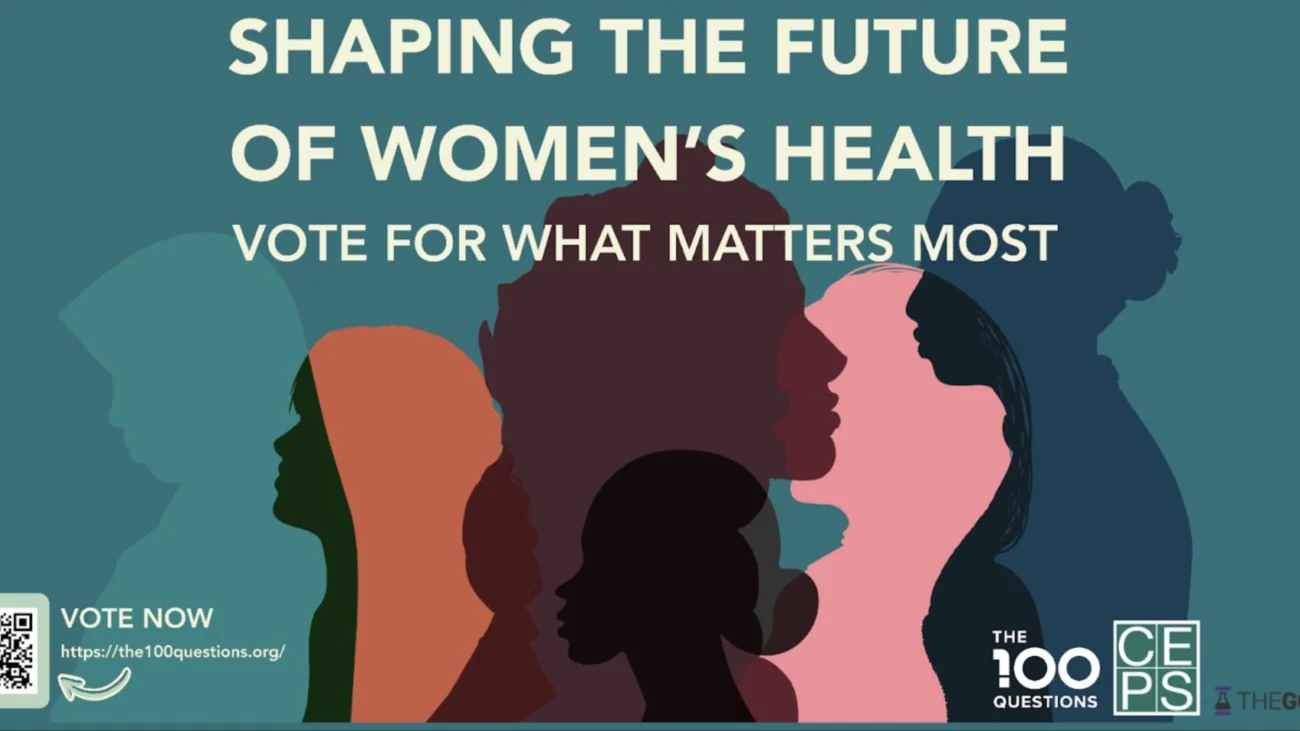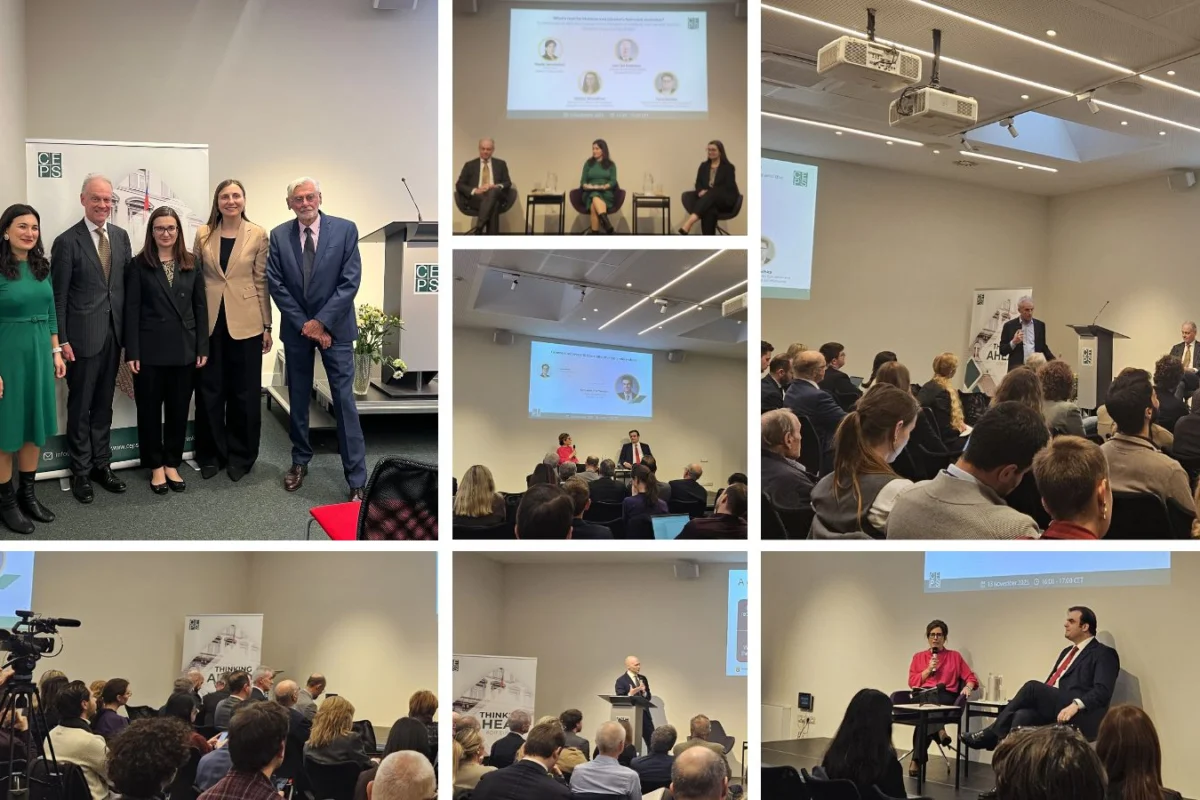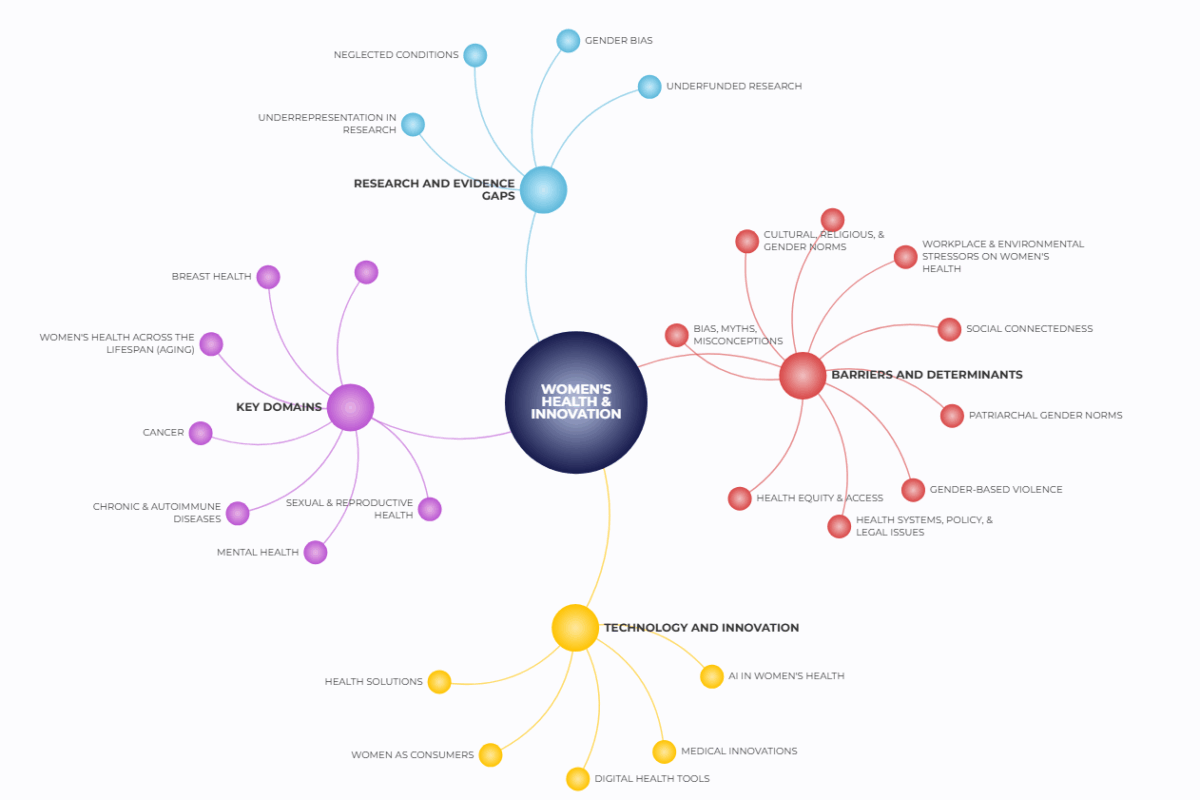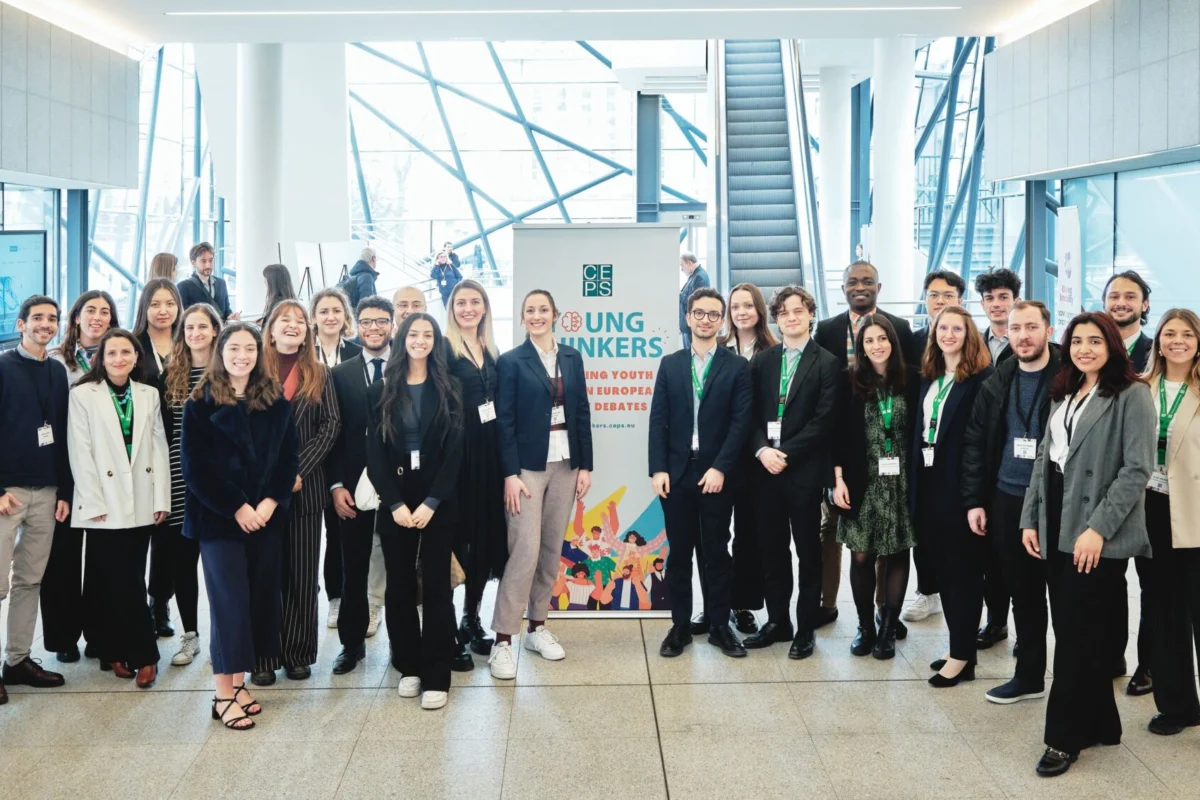Women’s health has historically been underexplored, fragmented, and too often reduced to a narrow set of topics such as reproductive or maternal care. Yet, women’s health encompasses far more—it spans chronic disease, mental health, social and economic determinants, access to innovation, and the policies that shape outcomes across the lifespan. To advance meaningful progress, we must first identify the questions needed to be asked and answered.
As part of the 100 Questions Initiative, The GovLab and the Centre for European Policy Studies (CEPS) have collaborated to identify the Top 10 data-actionable questions that could help guide research, policy, and investment in women’s health innovation globally. These questions were co-created through a rigorous participatory process with a diverse group of experts.
Now, we are seeking broader input to inform the ranking of the top ten questions. Through public voting, we are inviting people around the world to rank questions that should take precedence in shaping the future of women’s health innovation.
Submit your ranking here → https://form.jotform.com/252785012701047
Voting closes on November 15, 2025, at 9 AM ET.
Why Public Voting Matters
Public voting represents the final and essential step in the 100 Questions methodology. It ensures that decision-making about which issues to prioritize reflects not only expert insights but also the perspectives of a broader community. By inviting researchers, policymakers, practitioners, advocates, and members of the public to vote, this phase democratizes the process of setting priorities for women’s health research and innovation.
Each vote helps determine which questions will guide future research collaborations, data partnerships, and funding efforts. In doing so, voters help define where the global community should focus its collective attention and resources to close the most critical gaps in women’s health.
This effort builds on the release of the Women’s Health Topic Map, a foundational output of this initiative. The Topic Map was created through a collaborative process involving 77 “bilinguals”—experts who work at the intersection of women’s health and data or research. Together, they developed a comprehensive overview of the field, capturing its complexity and identifying where opportunities for innovation are most needed.
The Top 10 Questions
The ten questions now open for voting span a range of topics—from investment and regulation to data, technology, and social determinants of health.
*These questions are not presented in any particular order.
- What measurable social, economic, and health outcomes are associated with prioritizing women’s health (including reproductive health and postpartum care) as shared societal infrastructure rather than an individual burden?
- What structural, social, and policy factors perpetuate women’s disadvantages across health, political, and economic domains, and what evidence-based, transdisciplinary strategies can effectively dismantle these barriers?
- Which emerging or underserved areas in women’s health, including promising technologies and commercially viable but underfunded innovations, warrant strategic investment to drive transformative breakthroughs, improve health outcomes, and advance health equity?
- What financing instruments, funding models, or regulatory approaches could attract and sustain investment in women’s health R&D, including women-led innovations in underserved areas?
- What strategies, methodologies, and types of evidence are most effective in identifying and closing gaps in women’s health research that address barriers to scaling innovations for underserved populations?
- How can public funders of R&I ensure that biomedical studies consistently collect and report sex- and gender-disaggregated data, and what proportion of current research meets this standard globally?
- What strategies to engage men and boys, through violence prevention, caregiving, and reproductive health, are most effective in challenging harmful social norms and improving health outcomes for women and gender minorities, especially in low- and middle-income countries?
- What are the effects of estrogen and progesterone on non-reproductive organs such as the brain, muscles, metabolism, and digestion, and how does hormone therapy influence these systems?
- How might gaps in women’s health data affect the accuracy of AI diagnostics, and what strategies can ensure AI systems are designed to serve everyone, not just the statistical majority?
- How can policy, public health, and innovation systems better integrate sex- and gender-based data to close the gap between female longevity and female quality of life in old age?
About the Women’s Health Topic Map
Despite the vastness of women’s health and its centrality to human wellbeing, there has never been a comprehensive map that captures the full range of issues, actors, and gaps across the field.
Such a map matters. Without it, we risk overlooking key questions that have not yet been answered (orphan issues) or proritized or missing opportunities to align research and innovation. Topic mapping provides a systematic way to capture the complexity of women’s health, reveal its interconnectedness, and point to where innovation is most urgently needed. It also helps surface the different actors working across the ecosystem, enabling more strategic collaborations.
On October 7 2025, we released the first version of the Women’s Health Topic Map.
The Topic Map is part of 100 Questions initiative under the Gates-funded R&I project, where CEPS and The GovLab have teamed up to ask: what are the most important questions that could truly advance women’s health innovation?
Before answering that, we first needed to map the field of women’s health itself. To build this foundation, we convened 77 “bilinguals” — experts working at the intersection of women’s health and research or data—who helped us create the first-ever Topic Map of women’s health.
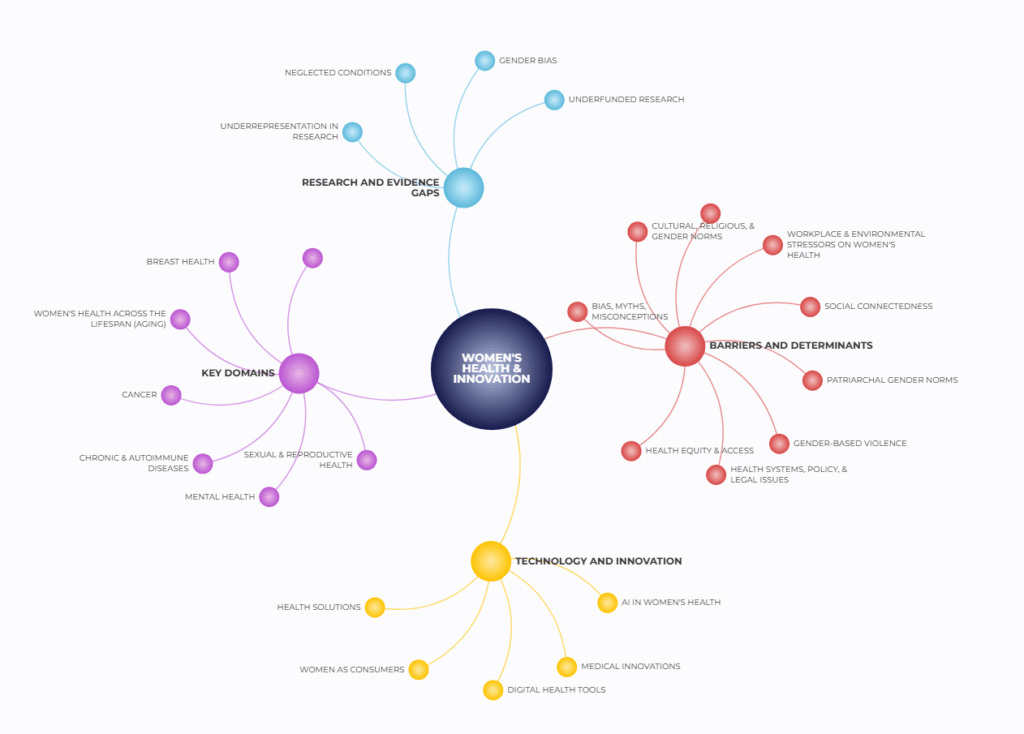
Why a Topic Map?
The Topic Map is a visual tool that helps us to:
- Capture the breadth and interconnectedness of women’s health, spanning medical, social, and economic dimensions.
- Identify key actors and orphan issues, revealing who is working where, and which areas remain underserved or overlooked.
- Provide a framework to guide innovation, placing innovation at the core of the 100 Questions approach.
- Take stock of the field today, offering a baseline view of where women’s health stands and where it needs to go next.
How we created It
The draft map was kept deliberately broad to ensure the full breadth of women’s health was captured as all these aspects can have implications for innovation.
We began with an in-person workshop at CEPS annual Ideas Lab event with a smaller group of bilinguals, then refined the map with feedback from the full cohort. The final version organises women’s health into four main categories:
- Key domains
- Research and evidence gaps
- Technology and innovation
- Determinants and barriers
Each of these four categories branches into more detailed subtopics, building a comprehensive web of the field.
What it offers
The Topic Map gives us a gestalt view of women’s health innovation, a big-picture lens that helps identify priorities, gaps, and opportunities. It also supports the process of matching the right experts to the right areas, ensuring the bilinguals can cover the full spectrum of women’s health.
Most importantly, the women’s health innovation branch of the map is the foundation for shaping the questions that will guide future research and investment.
Explore the map
You can explore the Topic Map on our HELIX website, along with a narrative document that provides a deeper dive into the categories, branches, and subtopics.
This is just the starting point. By mapping the field, we’ve built the foundation for identifying the questions that matter most and for sparking the innovations women’s health urgently needs. Stay tuned for the top ten questions identified!

